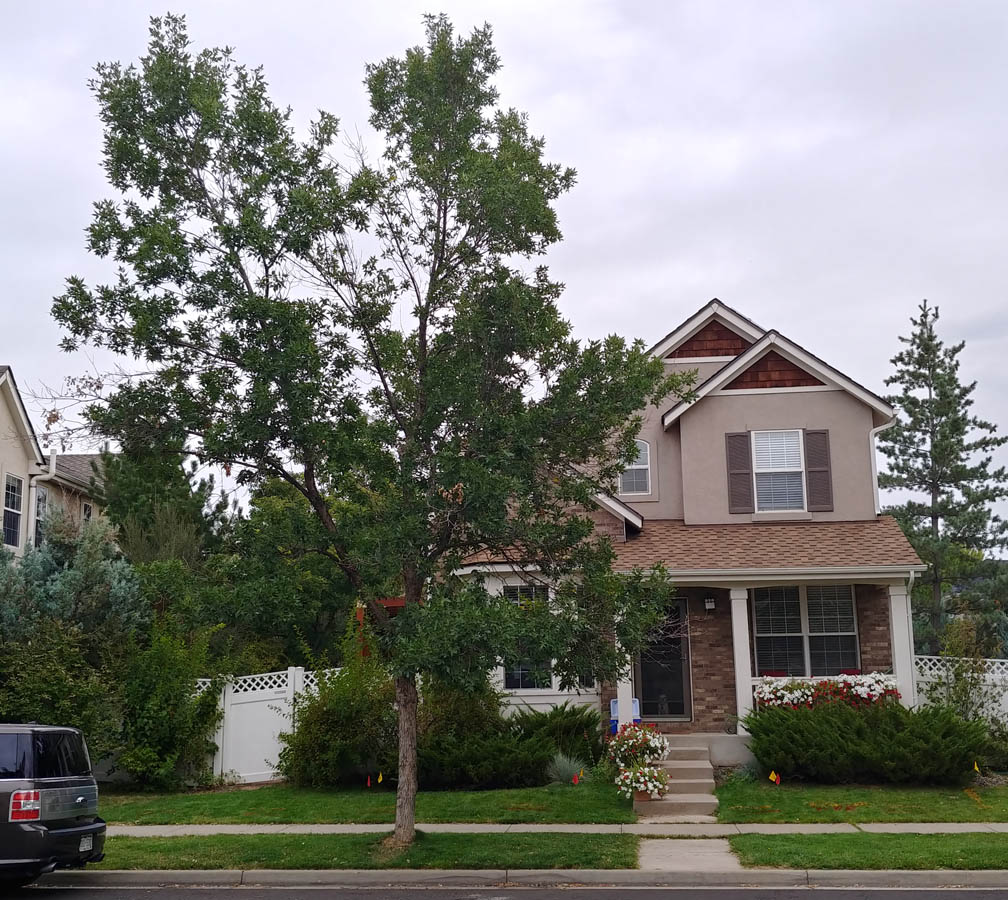
This is a story of murder and redemption.
The murder was of an ash tree; the deed committed by a certain SavATree.
But I had commissioned the hit.
The ash tree was mine. Or, technically, my wife’s and mine, as we are joint owners of our Denver home.
We moved here back in 2002. The neighborhood, on the property of a former Air Force base, was new. A skinny ash tree was among the 45 trees on our block. All but two were ash.
I had mixed feelings about our ash tree. Some of that was due to my neighbor immediately to the east. Steve was a decade older and on his second or third house. He knew trees in the way that people who own houses end up knowing trees.
“Ash is trash,” he said.
He clarified: the Lowry Redevelopment Authority had had them planted because they grow fast and only because they grow fast. Ash were nearly as poor a choice as aspen, he added.
“Aspen?” I asked. Aspen were the quintessential mountain tree, and we were in the mountains, right?
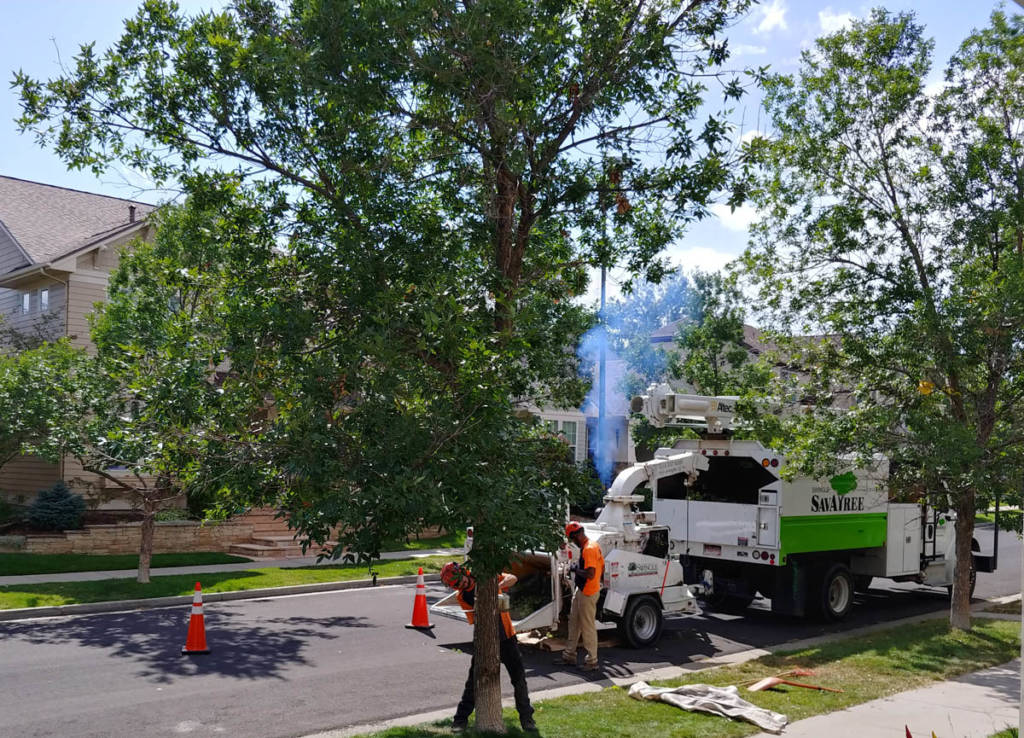
Steve pointed west, toward foothills that ensuing construction would soon block. “Those are mountains,” he said, in perfect Texan. “We’re in the high plains. Aspen live maybe 20 years down here.”
Then Steve said something that I silently repeat whenever I see a young aspen tree someone just foolishly planted: “Do you want that to be your legacy?”
I hadn’t considered my legacy.
“I guess not,” I said.
That was 18 years ago. Twenty years seemed like forever then. Another neighbor planted aspen liberally. They were beautiful, their half-dollar leaves quaking with the wind and yellowing like so many little suns as the weather cooled. A decade in, their bleached bark fattened into foot-wide columns and stretched to rooftop heights. The trees I had planted – three ussurian pears, a honeylocust, and a suffering ginkgo in the backyard, and, of course, the ash that had been out front when we moved in – all seemed stunted by comparison.
Now those aspens are either dead or dying. The folks who moved into that aspeny house recently had the pleasure of paying probably two grand to remove and stump the dead ones alone. Steve was right.
This is not about aspen, though. It’s about ash.
I came to appreciate the ash tree out front. Each fall it delivered more leaves. Our first daughter, born in 2003, could sit in a small pile of them by the time she was a toddler. By the time our second daughter was a toddler, the ash was dropping enough autumn yellow that they could jump into the pile if I raked them all in.
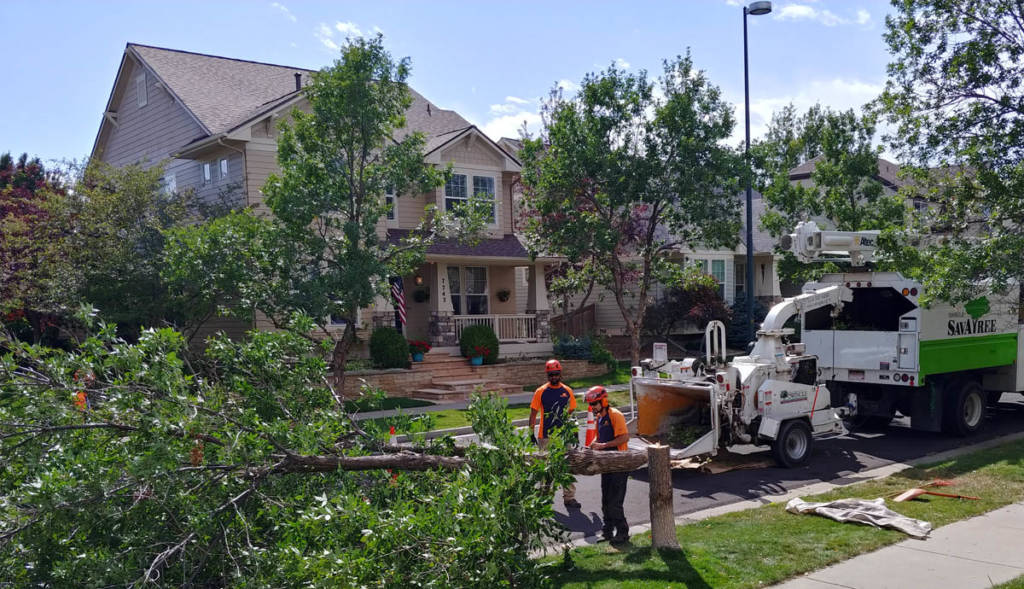
Years passed. Steve moved out after a messy divorce. The tree grew, though taking care to have some branches die off that were high enough to necessitate the purchase of a telescoping tree-trimming saw. Our yard and the ash-rich street slowly graduated from blindingly bright to somewhat shady. But all was not well.
My parents still live in Michigan where I grew up. The emerald ash borer landed in the city of Canton, not far from Detroit, in 2002, probably in a shipping pallet. This is a beetle that feasts on phloem, which is not to be confused with phlegm. Phloem is the medium through which nutrients flow from leaves to the rest of the tree. The beetle has no natural predators in North America, and, unlike Chinese ash trees that co-evolved with the pest, ash trees enjoy no natural defenses against the bug.
The ash borer wasted no time in decimating millions of trees in the Midwest. The question was whether it would spread farther west. On one hand, the Great Plains lacked ash trees from which the bugs might leapfrog. On the other, there were Interstates 70 and 80. By 2013, the emerald ash borer had been spotted in Boulder, Colorado. By 2019, the quarantine had failed, and the borer landed in Westminster, 14 miles from here as the invasive beetle flies (in June 2020, the bug made its way to Arvada, closer yet).
It was only a matter of time.
I began to look at our ash not as trash, but as something that’s dead but doesn’t quite know it yet.
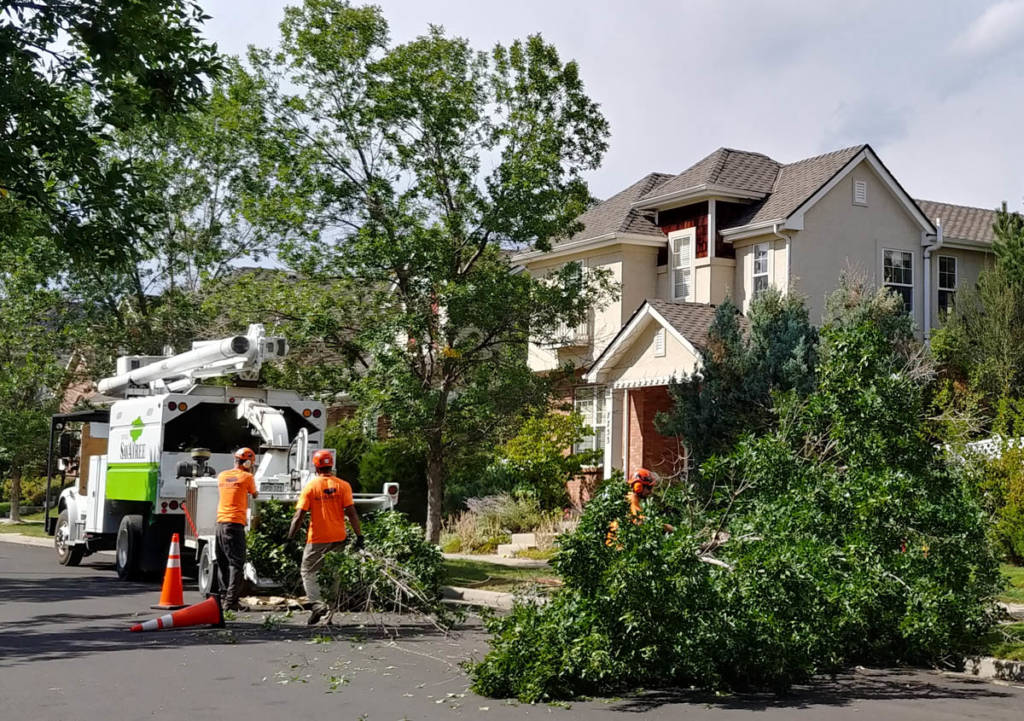
It’s not quite that simple. One can treat ash trees with pesticides that whack the emerald ash borer larvae which feast on phloem. For a retail-paying civilian, that costs about $250 once every two years. But while you’re at it, you may as well treat it for lilac ash borer at $140 a year (these figures from a friend and arborist).
So best case, keeping the ash alive would cost $125 a year. This was now a tree with maybe an 8-9 inch caliper (the diameter of the trunk at about shoulder height). The ash had also lost a major bough in a storm and was now highly asymmetrical. But it did cast some shade, a prized commodity in a Denver summer. And I’d known that ash for a long time.
Of course, I’ve noticed in general that, as the years have passed, I’ve become less sentimental about yard-and-garden greenery. The flora has collectively devolved in status, psychologically speaking, from anchored pets to inedible crops. So too the ash. To keep or not to keep the ash was, ultimately, a business decision. I ran some numbers.
SavATree provided an estimate for removing and stumping the ash and planting in its place a Kentucky coffeetree (I have a soft spot for lindens, but another sort of Japanese beetle seems to be feasting on those, my arborist friend cautioned. Plus I do like coffee).
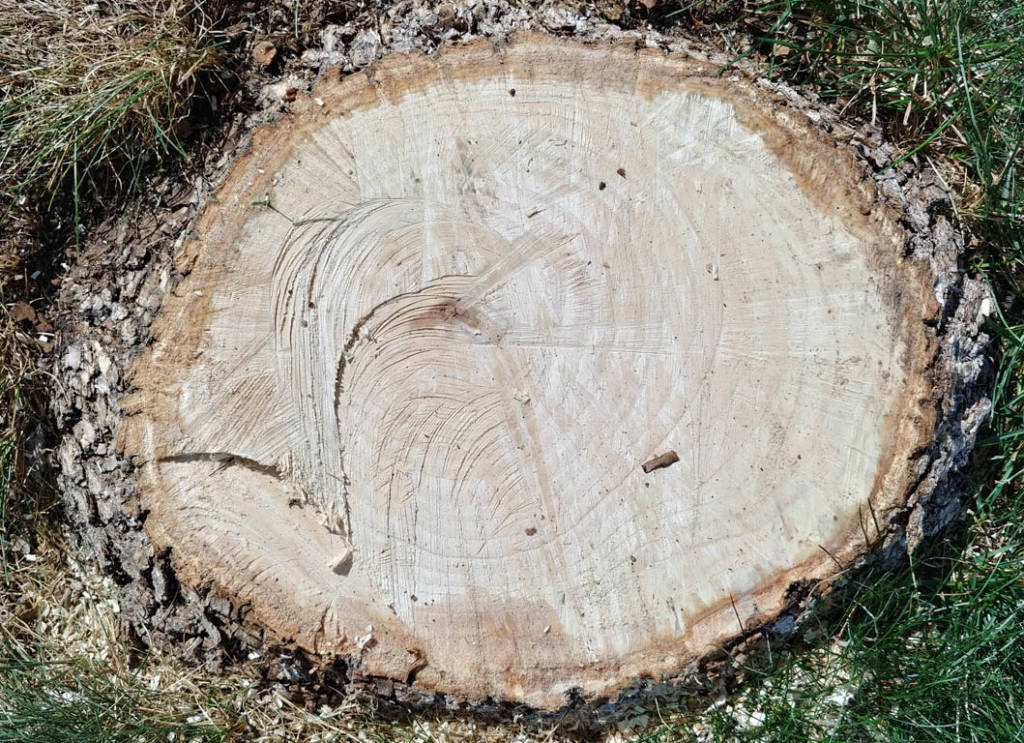
The estimate:
One (1) 10″ DBH Ash, Green (Fraxinus pennsylvanica), front parkway Take down tree as close to grade as possible, haul away wood and brush: $441
Stump Grinding Standard: $153
Plant 1 Kentucky Coffee Tree double espresso 2″ B&B 2 year warranty along parkway: $873
I had no frame of reference for the cost of tree removal and stumping, the latter which I hadn’t considered (I had envisioned perhaps leaving the stump in place and sitting contemplatively on it). Eight hundred seventy-three dollars struck me as a lot of dough for a two-inch-thick tree – but hey, double espressos must be high-end.
I considered cheaper options. One would be to save the $441 and take my friend Andy’s approach. He chained his ash to his Dodge Ram pickup and firmly pressed the accelerator. Lacking both a Dodge Ram pickup and a desire to section off with my hand saw or otherwise deal with a ton or whatever of wood and leaf material, I decided against. I’m also not well acquainted with many freelance stump grinders.
The tree, though – that I could have gotten for free. Denver has been on top of the emerald ash borer threat, and five-six years ago came up with a snappy program called “Be a Smart Ash.” They’ll give you a replacement tree.
But I was impatient. I had, a couple of years before, already inquired about the possibility of planting a second tree near the first (both in the right-of-way, a program requirement). Guys came out and stabbed the lawn with little red (electric utilities) and yellow (gas) plastic flags, adding like-colored spray-painted lines on the grass itself. They later informed me that there wasn’t enough space for the new tree with the ash still there.
Plus, I learned, the free trees are smaller – maybe an inch thick and eight feet tall. The double espresso was probably five years older and would provide shade five years sooner. So $1,467 it would be.
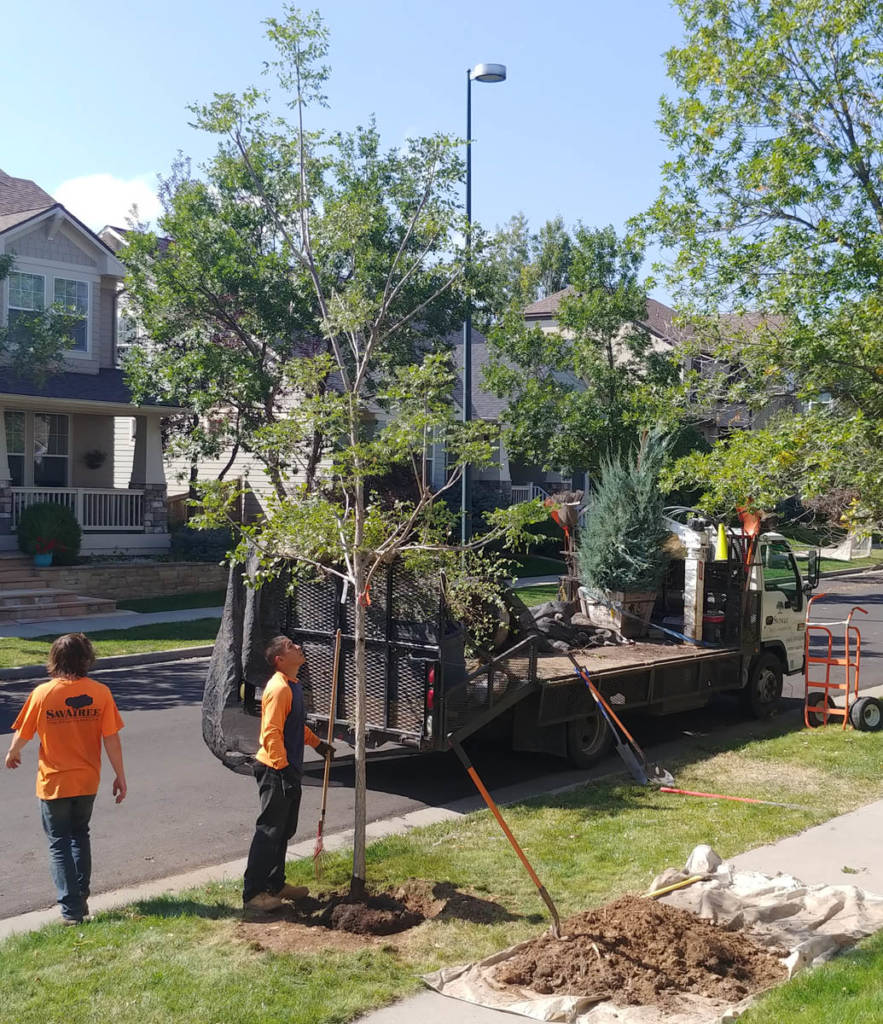
The numbers I ran assumed 2% inflation on $125 annually for ash-borer treatments. My five-year internal rate of return was -22%; breakeven: year 11. It didn’t take a hedge fund manager to recognize that the numbers were not good.
But I thought about Steve’s question: Do you want that to be your legacy? And I thought about the messes that short-term thinking keep getting us into, be it with trees, politics, or pandemics. And I thought about the old saw:
When’s the best time to plant a tree?
Twenty years ago.
When’s the second-best time to plant a tree?
Right now.
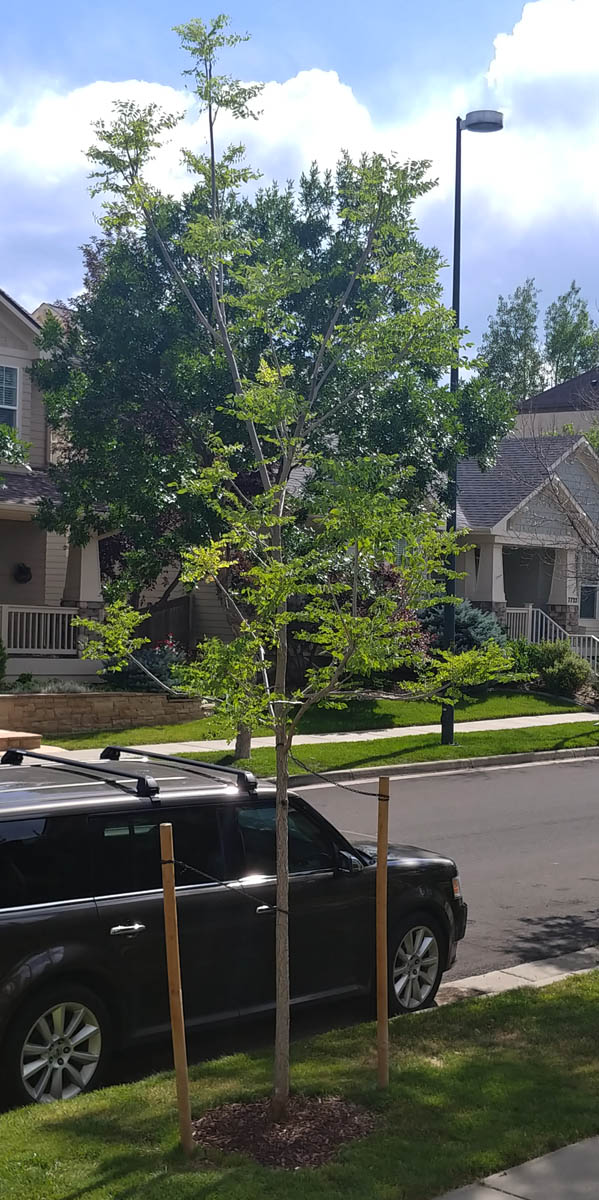
I spent the money. The photos tell the rest of the story. It hurt more than I thought it would to watch them chop and chew up and spit into the back of a truck the ash I’d known for the lifetime of a high-school senior. As rational as the decision seemed to be, I felt I’d betrayed a trust.
But now, nine months hence, I do love our little double-espresso Kentycky coffeetree. I’m old enough that I’ll ever see it in the grandeur of even a ten-year-old aspen. But there’s another old saw – allegedly a Greek proverb – for that, too:
A society grows great when old men plant trees whose shade they know they shall never sit in.
That is, at least, a legacy worth shooting for.

1 Comment
Love this article – really moving to think about nature jn terms of legacy and how to leave ones own in the trees you plant
Comments are closed.